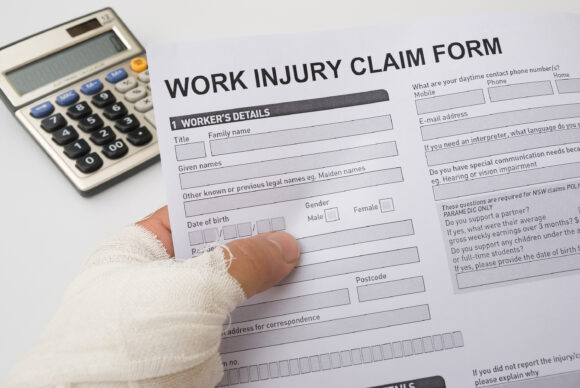Claims adjudicators rely heavily on data to make informed decisions. It’s the nature of the work: assessing a claim correctly requires a sizable amount of information, such as policy coverage details, underwriting terms, data on the claimant’s past health, reason for the claim, current condition, finances, occupation — the list goes on.
Most claims departments have a requirements matrix that ensures adjudicators gather all the information needed to validate and then process a claim. But some questions remain: Are current evidence-gathering processes too prescriptive, especially around how the evidence is to be gathered? And is this prescriptiveness negatively impacting the experience for both claimants and adjudicators?
Information, please
Consider a claim for a surgical procedure. Typically, the medical specialist who performed the surgery is required to submit to insurers, upon request, a form containing certain specific information about the procedure so that the adjudicator can process the claim.
In this instance, the surgeon’s report was readily available and contained all of the necessary details, including the claimant’s medical history leading up to the procedure and the procedure itself, for the form. Could this report be accepted as sufficient evidence for claims processing, rather than requiring the surgeon to transcribe the report’s information onto the insurer’s form?

Another issue for claims assessors is determining which of the many available forms to use. Some insurers require specific forms depending on the medical condition or claim scenario.
This generally means forms can only be sent to the medical specialists once the adjudicator can determine which form is required.
This can create several inefficiencies:
- In many instances, the initial claim filing is already accompanied by some documentation of the needed medical evidence. However, the insurance company’s claims department requires the information to be submitted using the applicable information form.
- Most claim information forms sent to medical specialists and care facilities are returned incomplete. In some instances, the questions on the required form may not even be relevant to the specific condition, which often leads to frustration and requires claim adjudicators to spend more time obtaining answers.
- Most claims departments require medical providers to physically print out the information form, fill it out, sign it, and then re-scan it and email it. As medical practices generally set aside specific days during a week or month for administrative work such as report-writing and claim form completion, claims department generally have to wait, which can delay receipt of the information. Medical treatment notes, on the other hand, are generally readily available and can be obtained in a more timely manner. Could these notes also be deemed sufficient evidentiary information for a claim?
Consider another scenario: a claimant has submitted high-level information about their occupational duties on their claim form. The claim, however, needs more granular detail, so the adjudicator has follow-up questions. A phone call with specific targeted questions is generally the most efficient way to obtain the information, but standard procedure at many insurers is to send the claimant a follow-up form in order to get the information in writing. As claimants usually believe they have provided sufficient information and are now having to fill out yet another form, this can cause processing delays.
What to consider before sending additional forms
For claims professionals, ensuring good risk management is an essential part of the work. However, rather than sending out form after form in order to obtain needed information, claims departments might benefit from considering the following, so that claims adjudicators can determine what information is absolutely essential, in which specific circumstances, and the best ways to gather it.
- How long has the policy been in force? The longer a policy has been in force, the more likely it is that the information can be trusted, and the less likely it is that the policyholder is acting in a misleading or fraudulent manner.
- Is the information required from a particular form critical to the assessment? And, if obtained, could it change the outcome of the claim? Keep in mind that the information may be more prescriptive than needed – that is, department procedures may require the information before the claim can move forward, but it may not be crucial to the assessment.
- How experienced is the adjudicator handling a case? During high pressure/high volume periods, when decisions have to be made quickly, a less experienced adjudicator may send out the incorrect form for missing information or may insist on sending an additional form to gather more data when their information is already sufficient.
- Is the needed information available from another source, and if so, could the claims department accept that source? Insurers that empower adjudicators to use alternative and vetted information sources (such as surgeon reports) can help adjudicators think creatively about how to obtain the facts needed rather than only accepting them if submitted on a specific form.
- Does the claim present any other concerns? If yes, adjudicators should be prudent in their investigations and request all evidence necessary to allay their concerns. If there are no additional concerns, then the sum assured and risk to the insurer are small, and a lighter-touch approach could be followed.
- Lastly, are claims adjudicators leveraging the telephone sufficiently? Consider encouraging them to use the telephone rather than sending out another form to obtain the information they need. By doing this, conversations can be captured and recorded, providing solid documentation of the information obtained. The phone is often the best tool to use for open and timely communication, and it encourages customer and physician engagement.
Conclusion
The business of claims is at a point where several of its administrative processes will benefit from digitization. Many insurers are already either in the planning or implementation stages, investing in artificial intelligence capabilities to automate claim submission requirements, file setup, scheduling follow up contacts, and more. Insurers are also examining their current standard procedures and processes carefully, including all the documents that need to be correctly filled out and submitted before actual assessments can begin, as well as expanding the universe of what constitutes acceptable data sources.
As part of this endeavor, claims departments need to review carefully every aspect of the work by examining the relevancy of and need for each of the many information-gathering forms used. The ultimate goal should be making the adjudication process for every claim as painless as possible for both claimants and adjudicators.
Insurers would also benefit from empowering their claims teams to make fair and valid decisions in the course of their assessments, which may include waiving certain requirements or forms if relevant and defendable.
This quote from Henry Ford seems particularly relevant in our context: “If you always do what you’ve always done, you’ll always get what you’ve always got” – which for claims assessors would mean heavier workloads and some unhappy customers. Reducing the number of forms required, and opening the process to alternative data sources, could go a long way to streamlining adjudication and improving customer experience.
Thorpe is head of claims for RGA South Africa. She is an occupational therapist in South Africa whose clinical background includes adult rehabilitation, hand therapy, HIV and mental health. She joined the insurance industry in 2000 and worked in group claims and individual underwriting, leading teams at a large direct Insurer. She joined a reinsurer in 2009 as head of claims and ultimately moved to RGA in 2013. She has been in her current role since 2017.
Was this article valuable?
Here are more articles you may enjoy.


 OpenAI And Microsoft Sued Over Murder-Suicide Blamed on ChatGPT
OpenAI And Microsoft Sued Over Murder-Suicide Blamed on ChatGPT  Storm Goretti Batters Europe With Violent Winds, Power Cuts
Storm Goretti Batters Europe With Violent Winds, Power Cuts  First Brands Judge Approves Examiner to Probe Fraud Allegations
First Brands Judge Approves Examiner to Probe Fraud Allegations  JPMorgan Wins Gender Pay Gap Dispute Against London Analyst
JPMorgan Wins Gender Pay Gap Dispute Against London Analyst 